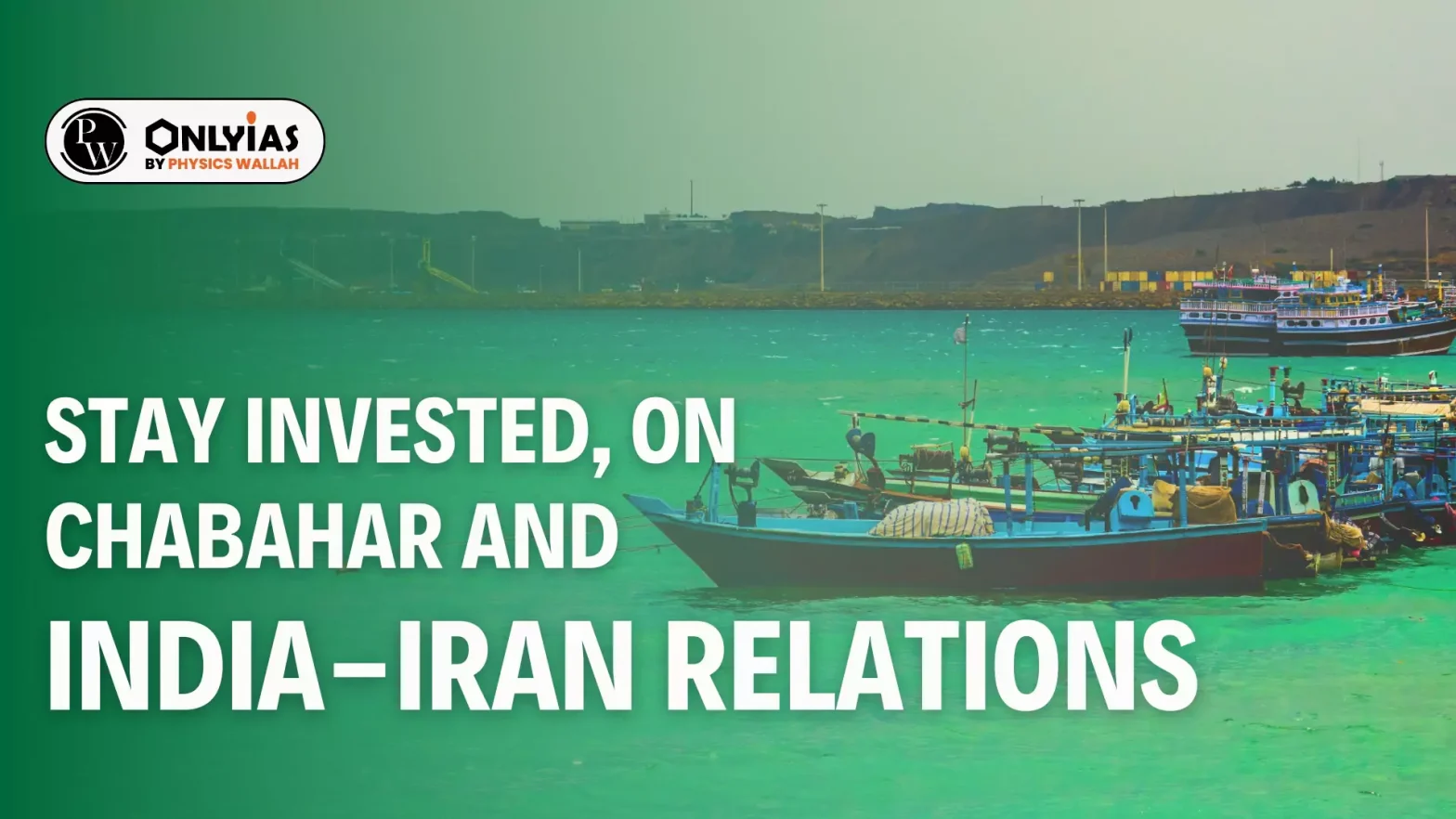Context
India Port Global Limited (IPGL) and the Ports and Maritime Organization (PMO) of Iran signed the long-term deal, which will allow India to upgrade and operate one terminal at Chabahar port over 10 years.
Chabahar and India-Iran Relations
- Investment by India: India will manage a terminal in Shahid Beheshti, committing $120 million to its equipment.
- Additionally, a $250 million loan credit facility for related port projects increases the contract’s total value to $370 million.
- Located in the southeastern Sistan-Baluchestan province and perched on the Gulf of Oman, Chabahar Port consists of two separate ports – Shahid Kalantari and Shahid Beheshti.
- Significance of Agreement: By signing a 10-year agreement with Iran to develop and operate the Chabahar port, India has taken its infrastructure and trade partnership with the Iran to the next level despite tensions in West Asia.
Enroll now for UPSC Online Course
Significance of Chabahar Port for India
- India’s Gateway to Afghanistan and Central Asia: It offers an alternative route to Afghanistan and Central Asia by bypassing Pakistan, allowing better trade with Central Asia.
- Port, roughly 200 km from Pakistan’s Gwadar, where China is developing a port as part of its BRI, would also help India expand its geopolitical influence in Central Asia.
- Connecting India to Europe via the INSTC: Chabahar is expected to be connected to the International North-South Transport Corridor (NSTC), bringing India closer to Europe through Iran, Azerbaijan and Russia.
- An alternative to the Suez route, a fully operational NSTC would reduce the time and money spent on intercontinental trade.
Challenges faced by the Chabahar Port Project
- Sanctions by US: In the past, American sanctions on Iran had delayed the project.
- Conceived in 2003, the project did not take off for years after the U.S. and the UN imposed sanctions on Tehran over its nuclear programme.
- India signed a memorandum of understanding in 2015 after the US eased sanctions on Iran following nuclear agreement, and in 2016, the contract was executed.
- India’s Strategic Maneuver Amid U.S. Sanctions on Iran: The U.S.’s unilateral withdrawal from the nuclear deal in 2018 and the reimposition of sanctions on Iran raised questions about India’s continued cooperation with Tehran.
-
- However, India managed to win a carve-out from U.S. sanctions that allowed it to operate the port through ad hoc measures.
- Change in US Interests: America’s regional interests have shifted over time. In 2018, when U.S. forces supported the Islamic Republic government in Afghanistan, a sanctions waiver was granted to India since Kabul also benefited from the port project.
- Today, with U.S. troops out of Afghanistan and the Taliban replacing the Islamic Republic, the U.S. is focused on containing Iran.
Enroll now for UPSC Online Classes
Conclusion
India has previously adjusted its engagement with Iran based on policy changes in Washington, D.C which should notbe done anymore.
- It should stay invested in Chabahar Port and seek to improve its trade and connectivity projects with Central Asia, which is essential for India’s continued rise.
![]() 18 May 2024
18 May 2024

